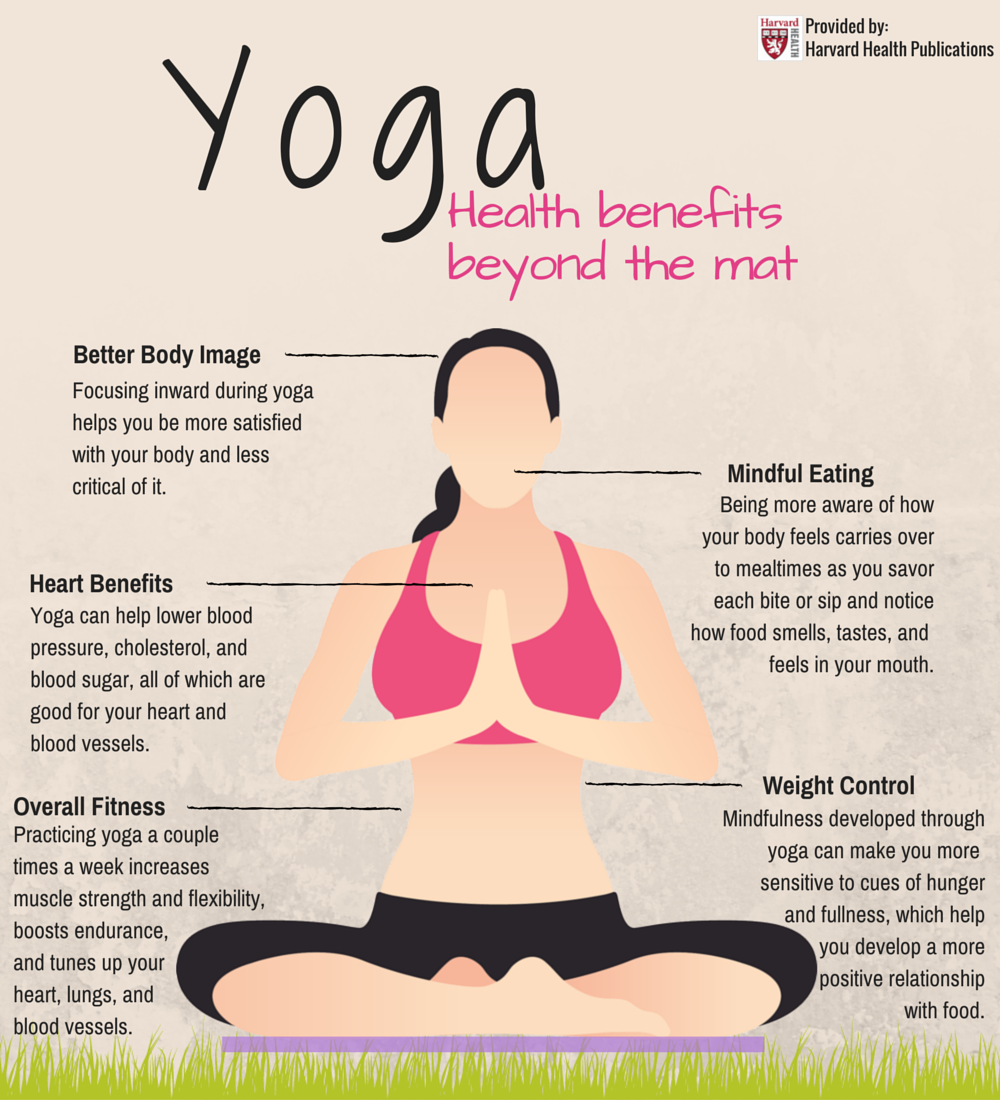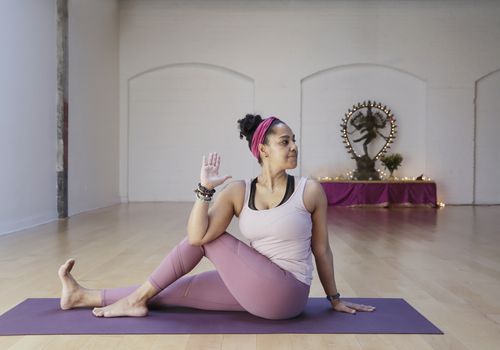
Menstruation Yoga focuses on positions that can reduce pelvic pain. Standing straight, the feet should be placed at hip width. The hands should be interlaced behind your back. The torso should not be straightened, the front of your pelvic region should be forward and your neck should gently roll backward. If you have a problem with your neck, you can perform the pose with your palms pressed together. You can also use your fingers to interlock without touching them.
Balasana helps to alleviate pain and discomfort. This pose is especially useful for women who have backache during periods. It helps to relax the body. Avoid it if you are pregnant or have knee problems. To avoid injury, the top of your thighs should be turned inwards. After performing the asana, relax your back. Keep the asana in place for at least 30 second.

The apana (or inversion) is a common yoga position during menstruation. This movement encourages the blood flow to the Fallopian tubs from the vagina. Inversions are a good way to prevent retrograde bleeding. A woman who practices this posture regularly may have fewer symptoms than a woman who does not practice it.
Ardha Chandrasana (or Ardha Chandrasana) is another yoga position that relieves menstrual cramps. This posture reduces cramps and stretches the abdominal region. This can be done standing or sitting with your legs bent in front. Although it may feel uncomfortable, this is safe for your period. This yoga move is great for stress relief, anxiety and mild depression. These are some of the many benefits you get from this exercise.
Particularly harmful to women's health are the inversions used in menstruation-yoga. Practicing them during this time can increase the risk of developing endometriosis, which is a condition where endometrial tissue grows on the body. Inversions could also lead to vascular congestion when there is more flow. For these reasons, women should avoid inversions during their period to avoid these side effects. This practice is beneficial for a woman's overall health and the well-being of her groin.

Yoga poses may be beneficial for women experiencing cramps or menstrual discomfort. This pose is also known to benefit women who suffer from back pain. It is not recommended for pregnant women. However, it can be very beneficial for them. The most common position for menstruation, the reclining turn, is one of its most well-known. It's comfortable for both pregnant and nursing mothers, and it stimulates blood flow. It can also improve the overall quality of life of menstruating women.
Dandasana, the best menstruation pose, is a yoga pose. This requires that a woman sit on her heels and place her left foot against her thigh. To firm her pelvic area she then bends her back and twists her torso. Next, her head will touch the left knee. You can also hold her toes in place by bending your elbows so that you can lift them with your hands.
FAQ
What effect does mental health have on my relationships?
Your mental state can impact every aspect of your personal and professional life. It can affect your ability and willingness to work at all levels. It can also be difficult to develop meaningful relationships when you have mental health problems.
It's easy for people to judge you when you have a mental illness. Sometimes you might avoid social situations because it feels like no one understands.
You must remember that people want you to be around them. They just need to know how to approach you.
Talking to people about your feelings is a good way to connect with others. Tell them how you're feeling and ask them for their advice.
What are some examples?
Any condition that causes distress or impairment to functioning is called a mental disorder. Mental disorders include anxiety, bipolar disorder (depression), schizophrenia, borderline personality disorders, obsessive-compulsive disorders, post-traumatic stress disorder (PTSD), eating disorders, substance abuse and other.
Why is mental well-being important?
Work, play and learn. Love. Our mental health is a reflection of our overall well-being. When we refer to mental health, we mean the physical, psychological and spiritual factors that have an impact on us every day. The good news is that there are many ways to care for yourself mentally, physically, emotionally, spiritually, socially, and environmentally. It's not necessary to do all the things at once. You can just start!
Understanding your current mental health status is the first step in improving it. Take this quiz and find out how much you're doing to support your mental wellbeing. If you score low, then you might want to consider making some changes to your lifestyle.
Suppose you scored high, congratulations! Consider the following tips to improve and maintain your mental well-being.
-
Get enough sleep Get enough sleep to keep your brain alert and stimulated. The American Academy of Pediatrics (AAP), recommends that children get 7 to 8 hours of sleep per night.
-
Exercise Regularly. Exercise releases endorphins into your body, which makes you happy and less likely to stress. Five times per week, aim for 30 minutes of exercise.
What causes depression in teenagers?
Adolescence is when we develop our identities. We start to define who we are as individuals and how we fit into society.
During this time, we also develop new friendships and romantic relationships. These experiences can lead to stress.
Although stress is natural, it's important to seek treatment if you are experiencing excessive stress.
Although you may think you can handle it all on your own sometimes you need someone to talk to.
During times of stress, your family members and friends can be there for you. They can also teach you ways to manage stress.
You might try meditation or exercising. Both can reduce stress.
You can also join a group like a church, sports team or church. You will make new friends and meet new people.
Statistics
- Similarly, while there is some agreement about the boundaries of typical mental disorders 2, there is likely less agreement about those for positive mental health. (ncbi.nlm.nih.gov)
- Similarly, for positive mental health, there is likely to be substantial agreement about some typical components (e.g., resilience to stress) 6, and controversy about more atypical components (e.g., career consolidation). (ncbi.nlm.nih.gov)
- Appropriate nutrition and exercise are likely among the most efficacious and cost-effective positive mental health interventions. (ncbi.nlm.nih.gov)
- In any given year, an estimated 18.1% (43.6 million) of U.S. adults ages 18 years or older suffered from any mental illness, and 4.2% (9.8 million) (healthypeople.gov)
- More than 40 million adults in the United States have an anxiety disorder, but less than 37% of people seek mental health treatment for their symptoms. (talkspace.com)
External Links
How To
What is the best way to improve your mental health?
Mental health refers primarily to your mental state and emotional well-being. It influences how you think, feel, act, relate, relate, sleep and eat.
Everyone is concerned about mental well-being. But when we talk about mental health, we often mean depression. Depression is a severe illness that affects millions every year.
A medical doctor must treat depression, which is known as clinical depression. There are many forms of depression.
According to the National Institute of Mental Health (NIMH), depression can be described as "a common mood disorder characterized in a depressed mood most of a day almost every day, loss of interests or pleasures in almost all activities and feelings of guilt or low-self-worth, disturbed sleeping or appetite, poor coordination, thoughts of death or suicidal thoughts or actions."
There are many ways that people experience depression. Many people feel depressed in different ways. Others may easily feel numb, empty, restless, agitated, angry, fearful, and/or cry. Other people may feel nothing.
Depression can be treated. Depression can be managed with medications, psychotherapy and lifestyle adjustments. If left untreated depression can cause severe problems at work, home, and in relationships.
Depression is more common for women than for men, though it can also affect boys and girls. Depression is the leading cause for disability worldwide in men and women aged 15-44 years.